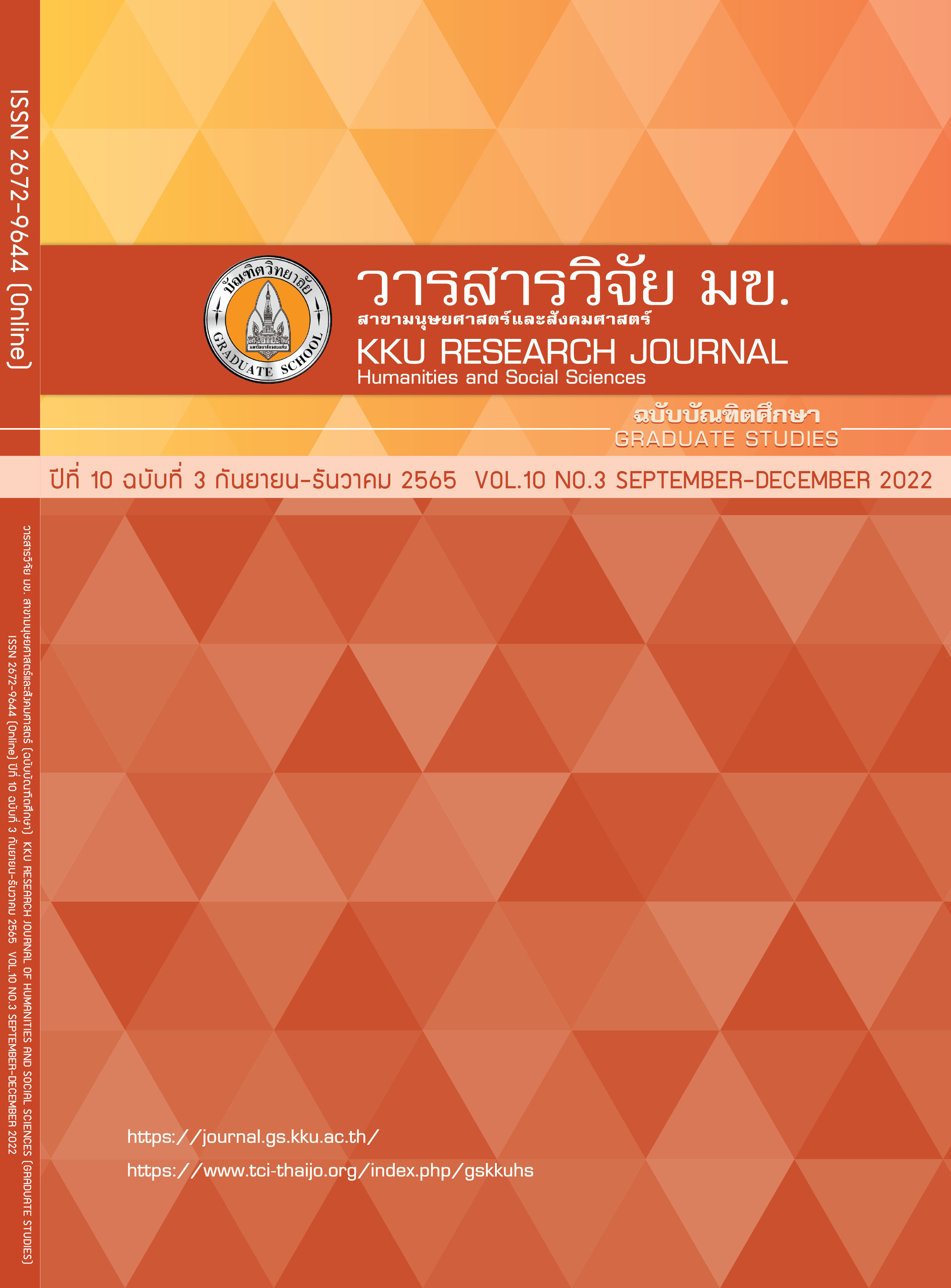Semiotics in “Bai Na Karn” (Face of Time) by Chokchai Tukpoe
Keywords:
Sign, Art, Chokchai TukpoeAbstract
This article aimed to study the series of artworks named “Bai Na Karn” (Face of Time) by Chokchai Tukpoe. One of artworks from the series called "Lom Hai Jai Sati” is selected for semiotics analyzing. Semiotics theories of Ferdinand de Saussure and Charles Sanders Peirce are used as an analytical framework. The artworks were associated with the names of pictures, catalogues, and artist interviews. The meaning of signs was analyzed for both denotation and connotation. In this article, the researcher presents the interpretation of semiotics in an artwork called “Lom Hai Jai Sati” (Breath of Consciousness) from “Baina Karn” (Face of Time) series by Chokchai Tukpoe. The result was found that
Chokchai Tukpoe was born in Nakhon Phanom. He had an interest in arts since he was a child. Chokchai Tukpoe was growing up among the conflicts and the wars. He saw the Vietnam-Laos-Cambodia war. The war impacted to his childhood feelings, on the other hand, it influenced him to create artworks. His artworks reflected peace, politics, government, life and society. Chokchai Tukpoe was known as the Isan Zen artist. For Chokchai Tukpoe, art is a self-development, a meditation retreat, a life reflection. He studied, did an experiment, and learned intuitive drawing. Chokchai Tukpoe is one of the driving forces in Isan arts circle. He is an Isan Cultural Heritage artist. The artwork "Lom Hai Jai Sati” Breath of Consciousness represents the semiotics within the framework of the named Bai Na Karn (Face of Time) series, including the Buddha image, eyes/eyebrows, nose, breath, and facial expression, concealing philosophical meaning. Exploring the semiotic significance of the artwork reveals the semiotic origins, and the inspiration behind the creation of Chokchai's artworks, which aim to communicate through his artworks.
References
Kaewthep K. Media Analysis: Concepts and Techniques. Bangkok: Edison Press Products. 2004. Thai.
Pimpakun S, Buanil S. Learning by Doing (Contemplative Art): Chockchai Tukpoe. Khon Kaen: Klungnana Vittaya. 2014. Thai.
Silsat K. The evolution of contemporary art in the Northeast and the development of visual arts in the Northeast in the 21st century. In: Seminar reports to find ideas. The creations of young artists in the Northeast. Bangkok: APS printing and Building; 1999. Thai.
Tangchaloke I. Guidelines for teaching and creative painting. Bangkok: Amarin Printing. 2007. Thai.
Tukpoe C. 3Decades Paradigm. Chiang Mai: Chotana Print. 2003. Thai.
Tukpoe C. Interview. Freelance Artist. Ubon Ratchathani; 10 February 2022.
Wikipedia, the free encyclopedia, Kasin [Internet]. Cited 2022 Oct 9]. Available from: https://th.wikipedia.org/wiki/กสิณ
Downloads
Published
How to Cite
Issue
Section
License

This work is licensed under a Creative Commons Attribution-NonCommercial-NoDerivatives 4.0 International License.




